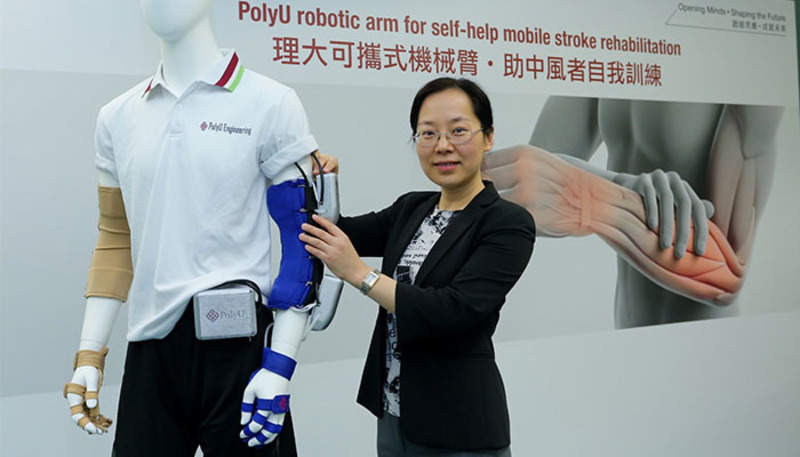
A research team at Hong Kong Polytechnic University (PolyU) has developed a robotic arm to facilitate self-help and upper-limb mobile rehabilitation for stroke patients after discharge from hospital.
Referred to as a mobile exo-neuro-musculo-skeleton, the robotic arm enables intensive and effective self-help rehabilitation exercise.
The lightweight device is said to be the first of its kind to combine exo-skeleton, soft robot and exo-nerve stimulation technologies. It is intended to cater to the increasing need for outpatient rehabilitation service for stroke patients.
PolyU Department of Biomedical Engineering researcher Hu Xiaoling said: “We are confident that with our mobile exo-neuro-musculo-skeleton, stroke patients can conduct rehabilitation training anytime and anywhere, turning the training into part of their daily activities.
“We hope such flexible self-help training can well supplement traditional outpatient rehabilitation services, helping stroke patients achieve a much better rehabilitation progress.”
Designed to be flexible and easy-to-use, the robotic arm is compact in size, has fast responses and requires a minimal power supply.
It comprises different components for the wrist/hand, elbow, and fingers that can be worn separately or together for various functional training needs. The device can also be connected to a mobile application, where users can manage their training.
The exo-skeleton and soft robot components of the device offer external mechanical forces guided by voluntary muscle signals in order to facilitate the desired joint movement for the patients.
PolyU improved the rehabilitation by adding its Neuro-muscular Electrical Stimulation (NMES) technology, which allows the robotic arm to contract user’s muscles when electromyography signals are detected.
When tested in a clinical trial involving ten stroke patients, the robotic arm is reported to have led to better muscle coordination, wrist and finger functions, and lower muscle spasticity following 20 two-hour training sessions.
The researchers plan to collaborate with hospitals and clinics for conducting additional trials.



